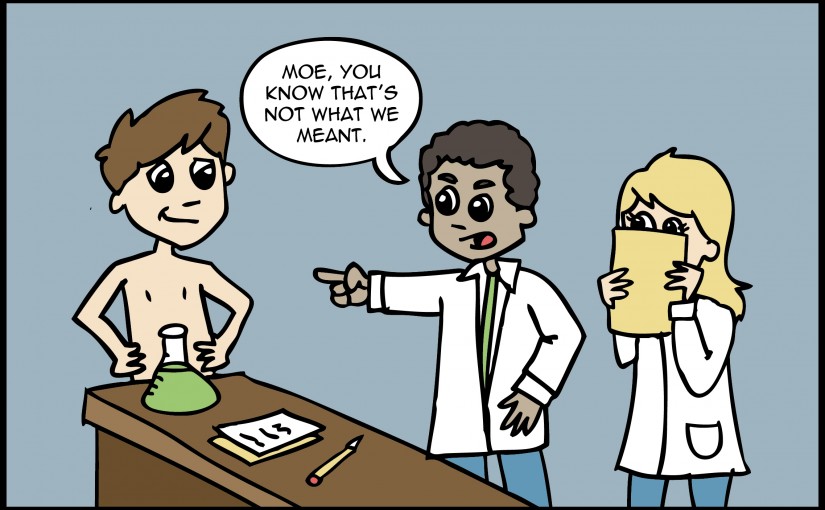When presenting to your supervisor or group, it is highly tempting to show the minimum amount possible without making it look like you aren’t working. It is embarrassing to stand up in front of the whole lab, and you probably want to get the experience over with. This is a wasted opportunity. The point of presenting at lab meetings is to help you make your research better, and people can only correct your mistakes if they see them.
See Things to Include
- A detailed explanation of why you did everything.
- The method you used to collect the data in as much detail as possible.
- Your results with all the statistics.
- What you concluded from the work you have done.
- What are your thoughts for further work.
- If you have any ideas for the long term direction of the project you could also include this.
The most important part to include is the methods you used and any results that went wrong. It will of course be embarrassing if you have made mistakes, but THAT IS WHAT THESE MEETINGS ARE FOR. The earlier you learn why things are going wrong the earlier you can put them right.
It is a mistake to think you can make these corrections on your own. It is human nature to bias our opinion of our work to protect ourselves from the depressing realisation that we are bad at things. Other people will spot your mistakes more easily, so show them.
Get Practical Tips
- Make sure you understand why you used the stats in your presentation.
- Make the presentations look good. Don’t waste time spending hours changing fonts, but remember that a lot of what your supervisor thinks of you will be based on these meetings. They don’t see the hours you spend working out of hours. Make sure your data are well organised and coherent.
- Label the graph axes thoroughly. Don’t use nondescript terms like increase or change, but describe what is increased or changed within the axis. If the description is too long, add a paragraph below the graph to show the explanation.
- Show procedures that haven’t worked. There is little to learn from things that worked well, but where they failed there is probably a reason, and your supervisor or someone else in the group may know it.
- Meet with your supervisor as regularly as they allow. If they are too busy or you don’t get on with them, then find someone else who will chat to you about your work.
- When meeting one on one, have a plan of each point you need to raise pre-written on a notepad so that you can tick them off as they are discussed.
Read Personal Perspective
I used to hate presenting at lab meetings. As a result, I put little effort into making the data look presentable. The frequent and impenitent lack of stats or labelled axes earned me some harsh words from my supervisor. It took me too long to realise that just because these things were unimportant to me, didn’t mean they were to him.
I also only showed the data that I thought were interesting, and left off the data that didn’t work. Not only did my very brief presentations not impress anyone, but the experiments that were failing kept failing and I was forced to look for explanations elsewhere. When I finally showed the failed results, my supervisor and the rest of the lab made several very good suggestions that I tried.
It still didn’t work, but that’s science. At least I got to write that I tried those things in my thesis, which saved me from further scrutiny in my viva.
Have you made similar mistakes? Share your experiences or feelings about this guideline in the comments below, or just give it a thumbs up.
